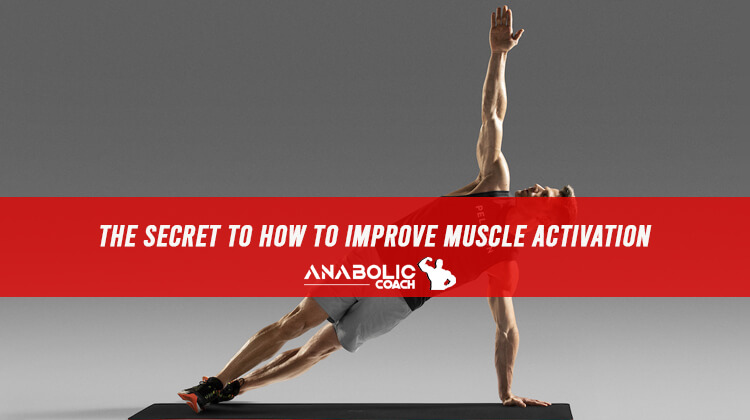Mind-Muscle connection training (MMC) is a tried and tested neurological technique that many fitness enthusiasts, bodybuilders and athletes use to stimulate hypertrophy, enhance strength and promote efficiency in their overall performance.
In this telling guide, you will learn what MMC training is all about, how to improve muscle activation with pragmatic tips and those common mistakes bodybuilders make that could be detrimental to their mind-muscle connection drive.
Understanding Mind-Muscle Connection Training and How It Works
Imagine you have a specific muscle group that you want to train. Do you just lift weights as usual or do you focus on training that specific muscle group by performing a weight training routine that targets the muscle group?
In other words, the mind-muscle connection involves a deliberate move to improve a muscle during a workout session.
For example, if your goal is to build your biceps rather than just lifting dumbbells as you normally would when performing bicep curls, you should instead try to squeeze your biceps all through the curl movement.
It is worth noting that there have been different studies pointing to the fact that if you make an intentional, conscious effort to activate a muscle group, you will increase your neuromuscular control and efficiency as you recruit more muscle fibers during training which ultimately results in enhanced muscle growth.
The contraction of certain muscles all starts in your brain from the moment you make a conscious effort to move the muscles during a workout routine.
As a matter of fact, specific muscle fibers are activated when your body’s central nervous system transmits signals
via the neuromuscular junction to the targeted muscle fibers.
Therefore, whenever you are mentally focused during your workout sessions, you recruit and activate a greater number of muscle fibers which will lead to you experiencing stronger muscle contractions, and enhanced muscle hypertrophy over the course of your training program.
The findings of one research article comparing focused training to non-focused training and available in the renowned European Journal of Applied Physiology stated that muscle activation in biceps and pecs increased by 12% and 22% respectively when these muscles are specifically targeted during weight training.
Also, the findings of one study available in the Journal of Strength and Conditioning Research summarized that advanced level lifters that performed mind-muscle connection training experienced far greater hypertrophy compared to lifters engaged in weight training where the emphasis is on general movement.
How to Go About Maximizing Muscle Gains with Mental Cues
There are focus and muscle growth techniques that you can adopt today if maximizing muscle gains with mental cues is your goal.
But first, it is important for you to understand that neuromuscular control for strength gains do not happen overnight, it takes patience, commitment and determination on your part.
Here are seven tips on how to improve muscle activation through mind-muscle connection training.

#1. Be Slow and Deliberate with Your Repetitions (Reps)
Whenever you are engaging specific muscle groups, you will drastically reduce any muscle engagement if your lifting movements or repetitions are too quick.
It is better to rely on slow, deliberate repetitions that will raise the TUT or time under tension which then ensures that mind-muscle connection is achieved and targeted muscles are properly engaged.
You should try out the 2:1:2 repetition tempo during your lifts. This is where you have 2 seconds of lifting the weight, 1 second of squeeze, and 2 seconds of lowering the weight.
#2. Start Off with Lifting Light Weights
When you lift heavy, your primary focus will naturally shift from achieving greater muscle contraction to increased momentum.
However, the former is what you want to achieve when lifting weights for the purpose of training specific muscles.
Therefore, you should start your weight training by lifting lighter weights instead of heavy weights. You can start off with lifting between 60% to 70% of your one repeat to maximum or 1RM, which is that weight that you can only afford to lift once before it tells on your body.
This way you will be able to perfect both your mental focus and weight lifting form. For example, if your 1RM is 200 pounds (lb), you should lift between 120 and 140 pounds of weight.
#3. Create a Mental Note of Your Targeted Muscles Contracting
It is crucial that you form a mental picture in your mind’s eye of your targeted muscles contracting before you even begin lifting weights.
This is one of those focus and muscle growth techniques that increases your neuromuscular control for muscle and strength gains by increasing muscle fiber engagement.
You should try to boost your mental focus during your warm-ups by closing your eyes and visualizing your muscles contracting.
#4. Try to Squeeze and Flex Your Targeted Muscles before Each Set
You can greatly enhance neuromuscular efficiency and activate or engage a great number of targeted muscle fibers with static holds or Isometric contractions during your resistance training.
What you should do to further reinforce muscle engagements after a set and before the start of the next set is to squeeze and flex your targeted muscle groups for a short period of between 10 to 15 seconds.
#5. Perfect Your Form with Minor Body and Hand Adjustments
By making minor body and hand adjustments you can significantly boost tension on your targeted muscle groups.
For example, imagine that you are performing lateral or lat pulldowns, you can greatly boost lat activation with a thumbless grip which will reduce the involvement of your forearms during the weighted workout.
#6. Perform Pre-Exhaustion Sets
Before you perform compound exercises, you should first try out isolation workouts as these tend to get the targeted muscles fatigued which then ensures that you have increased muscle engagement in subsequent lifts.
For example, if you want to pre-activate chest muscles, you can try out cable flyes before you perform a bench press.
#7. Reduce Your Lifting Momentum
Note that if your lifting momentum (i.e. either bouncing or swinging weights) is too fast, you will significantly compromise the overall effectiveness of your weight training as direct muscle tension is reduced.
You should therefore maintain a steady paced momentum that activates targeted muscle fibers rather than a fast lifting momentum that compensates by making use of the muscles of other parts of your body.

Common Mistakes that can Compromise Mind-Muscle Connection Training
– Lifting heavy:
Whenever you lift heavy you lose focus on targeting specific muscle groups and heavy lifting can adversely affect your form which further compromises your mind-muscle connection.
– Too little or no warm-ups:
You need to warm-up properly if you want to increase your neuromuscular control and boost blood circulation.
– Too much reliance on machines:
You will restrict stabilizer activation and reduce your targeted muscle engagement if you rely too much on machines during your strength training.
– Failure to utilize full-range-of-motion:
In order to activate targeted muscle fibers, it is advisable that you focus on utilizing full-range-of-motion rather than partial repetitions that can reduce hypertrophy and strength gains.
– Not taking muscle imbalances seriously:
Note that weak muscle groups tend to compensate for much stronger muscle groups which will ultimately reduce the efficiency of your mind-muscle connection training.
Conclusion
By perfecting mind-muscle connection training, you will be able to improve your overall athletic performance while at the same time optimizing muscle growth by increasing the activation of specific muscle fibers. Our experts will be more than willing to provide you with free coaching on mind-muscle connection training whenever you are ready to take the next step in your fitness program.


